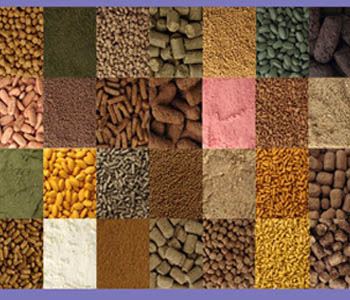Deliver the Right Nutrition in the Right Form
Jul 11, 2019

From alligators to orangutans, each animal has specific nutritional needs. In addition to these specific nutritional needs, the shape and size of the feeds we provide can have an impact on the animal’s well-being.
For example, the ability for feed to float on water is critical for some fish. The capacity to put tiny pieces of feed in a bale of hay for monkeys, allows them to spend the day foraging for it as they would in the wild, an essential element to their psychological well-being. This behavior is also important for many birds and other species.
Some of the smallest sizes of feed can also carry the most importance. An animal might have a little mouth to accommodate while some animals need their feed to fit in their hands, then bite off the end and keep eating it, explains process researcher Kent Lanter.
To provide animals’ proper nutrition in the shape and size best suited for their individual needs, Mazuri® utilizes patented extrusion technology to create feeds. From minuscule (1/16”), to large (2”) Mazuri® can provide feed in approximately 100 different shapes and sizes.
Due to the wide variety of nutritional needs of the different animals, Carl Gregory, extrusion operator at the Richmond, Ind., plant explains, there are extensive quality assurance protocols followed to ensure there is no cross-contamination between products.
With more than 20 years of experience with extrusion technology, Carl carefully monitors each batch as it is created to make sure the size, shape, density and moisture is consistent and matches the specifications desired. Additional quality control processes ensure each batch of feed provides consistent nutrition to the animal every time.
Not to be confused with pelleting, extrusion is different because it:
Collectively, this process can also help improve the palatability and digestibility.
One other important differentiator with the patented extrusion technology is the ability to form feed with minimal starch. Kent explains some animals in the wild don’t have exposure to starch and as a result, their digestive systems don’t handle starch very well.
Kent and Carl agree, delivering optimal nutrition while maintaining the size, shape and texture needed for each animal is important. Because of this, Mazuri® maintains a strong relationship with zoos and universities to both develop new products and utilize real-world data to understand how current products are performing – all to ensure animals are thriving.
Many of these feeds developed for zoos are also available to the general public in smaller packaging for exotic pets.
--- Mazuri Exotic Animal Nutrition
For example, the ability for feed to float on water is critical for some fish. The capacity to put tiny pieces of feed in a bale of hay for monkeys, allows them to spend the day foraging for it as they would in the wild, an essential element to their psychological well-being. This behavior is also important for many birds and other species.
Some of the smallest sizes of feed can also carry the most importance. An animal might have a little mouth to accommodate while some animals need their feed to fit in their hands, then bite off the end and keep eating it, explains process researcher Kent Lanter.
To provide animals’ proper nutrition in the shape and size best suited for their individual needs, Mazuri® utilizes patented extrusion technology to create feeds. From minuscule (1/16”), to large (2”) Mazuri® can provide feed in approximately 100 different shapes and sizes.
How extrusion works
At the beginning of the extrusion process, ingredients are mixed to form a “dough-like” consistency. The extruder pushes out the dough similar to a “sausage grinder” but under extremely high pressure, utilizing different shaped dies and a variable speed knife to form it into the shape and length needed.Due to the wide variety of nutritional needs of the different animals, Carl Gregory, extrusion operator at the Richmond, Ind., plant explains, there are extensive quality assurance protocols followed to ensure there is no cross-contamination between products.
With more than 20 years of experience with extrusion technology, Carl carefully monitors each batch as it is created to make sure the size, shape, density and moisture is consistent and matches the specifications desired. Additional quality control processes ensure each batch of feed provides consistent nutrition to the animal every time.
Not to be confused with pelleting, extrusion is different because it:
- Uses both water and steam
- Forms at higher moisture
- Uses a screw to knead the product and to form it into the desired shape
- Heats to approximately 250 degrees F to gelatinize the starch to hold the shape, without compromising nutritional value
- Allows for the creation of low carbohydrate diets with Mazuri’s patented technology
Collectively, this process can also help improve the palatability and digestibility.
One other important differentiator with the patented extrusion technology is the ability to form feed with minimal starch. Kent explains some animals in the wild don’t have exposure to starch and as a result, their digestive systems don’t handle starch very well.
Kent and Carl agree, delivering optimal nutrition while maintaining the size, shape and texture needed for each animal is important. Because of this, Mazuri® maintains a strong relationship with zoos and universities to both develop new products and utilize real-world data to understand how current products are performing – all to ensure animals are thriving.
Many of these feeds developed for zoos are also available to the general public in smaller packaging for exotic pets.
--- Mazuri Exotic Animal Nutrition